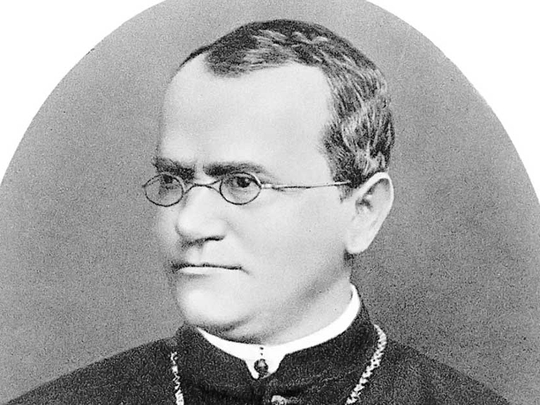
Gregor Mendel discovered fundamental rules of genetics by raising pea plants. He realised that hidden factors — we now know them to be genes — were passed down from parents to offspring.
It wasn’t until the early 1900s, long after Mendel’s death, that doctors discovered that humans weren’t so very different. Some diseases, it turns out, are inherited — they’re Mendelian.
Today, scientists have identified more than 7,000 Mendelian diseases, and many are discovered with screenings of children and adults. But a new study suggests that many disorders go undetected.
With a database of electronic health records and DNA samples, a team of scientists has found that 3.7 per cent of patients in a hospital system carried a genetic variant linked to a disease. It’s possible that as many as 4.5 per cent of cases of apparently nongenetic diseases, from infertility to kidney failure, are the result of such mutations.
The study suggests that it may be possible to catch more of these hidden disorders with a computer programme that flags suspicious clusters of symptoms in groups of patients. That would be a big step forward for patients coping with unexplained ailments.
The study, published recently in Science, represents the first large-scale search of electronic health records for hidden Mendelian diseases. But Dr Joshua C. Denny, a biomedical informatics researcher at the Vanderbilt University School of Medicine and co-author of the new study, suspected that it only revealed the tip of a genetic iceberg.
Much larger databases including DNA and records for hundreds of thousands of people are being built, and searching them may uncover many more hidden mutations.
Denny and his colleagues gathered data from Vanderbilt’s electronic health records system, which has more than 2 million patients. More than 225,000 have volunteered for genetic research, allowing scientists to analyse their DNA.
The researchers picked out 21,701 patients from the database and surveyed all the symptoms recorded for each one. They then compared the symptoms to those seen in 1,204 Mendelian diseases.
It was a difficult task. These disorders can produce a number of symptoms, and each patient may have a different combination of them. And some symptoms linked to a Mendelian disease may also be signs of other diseases. Cystic fibrosis can cause asthma and recurrent infections, for instance — but those symptoms alone aren’t enough to diagnose the disease.
Denny and his colleagues developed a scoring system to determine how likely it was that each patient in their study suffered each Mendelian disease.
The researchers identified groups of people with symptoms suggesting they shared a Mendelian disease. The researchers went on to examine the DNA of these patients to see if they also shared a mutation.
The team found 807 patients carrying mutations in genes linked to 17 diseases, such as cystic fibrosis or hemochromatosis, which causes iron to build up in the blood.
Only eight of these patients received a test that revealed the mutation. In other cases, doctors had tested for the wrong disease. Many times, the doctors hadn’t ordered any genetic tests.
Typically, these disorders can be passed down in one of two ways. A dominant disease, like Huntington’s, requires inheriting just one defective copy of a gene from a parent. Recessive diseases, such as sickle cell anaemia, usually require two defective copies of the same gene.
The mutations that the scientists discovered often didn’t fit the standard profile for the diseases. Many of the patients had conditions that are considered recessive, yet they carried just a single defective copy of the gene.
A single defective copy may cause milder versions of Mendelian diseases, Denny suspects: “The researchers identified 36 people, for example, who carried only one defective version of a gene called AGXT. Two copies of the gene cause a disease known as primary hyperoxaluria, which can result in kidney failure in toddlers. The patients identified in the new study also suffered kidney problems — but not in the first few years of life.”
These results are all the more surprising given how modest the search was. Denny looked for only a limited number of mutations in a relatively small group of people of European descent. (Much of what is known about gene variants that cause disease was discovered by researching predominantly white populations.)
Heidi L. Rehm, a molecular geneticist at Brigham and Women’s Hospital who was not involved in the study, said many doctors do not suspect that their patients are suffering from a Mendelian disorder unless they have severe textbook symptoms.
Overlooking the genetic causes of diseases can seriously harm patients. “There are people here who had kidney and liver transplants that could potentially have been avoided,” Denny said.
Undiagnosed hemochromatosis, for example, can lead to liver failure. Of the 40 people Denny and his colleagues identified with hemochromatosis, four needed liver transplants. Yet hemochromatosis can be readily treated by having patients donate blood on a regular basis, which helps rid them of excess iron.
The strategy employed by the research team was startlingly effective at identifying potential causes of disease. Denny and Rehm agreed the best solution might be to sequence the entire genome of every patient. But such a policy would create an unmanageable glut of genetic data.
“I don’t think we’re ready to do that,” Denny said.
–New York Times News Service













